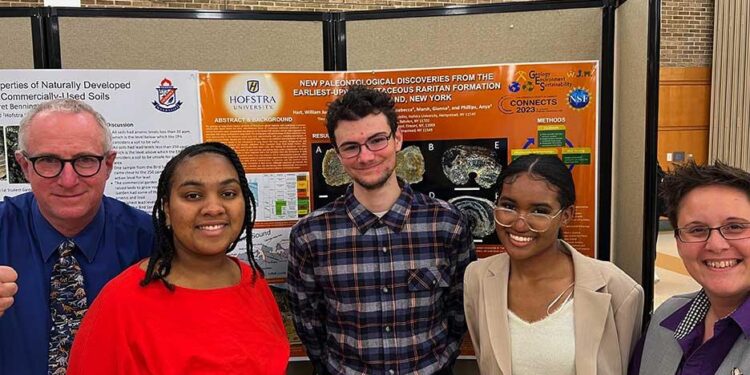Hofstra University’s Summer Science Research Program (HUSSRP) is set to embark on its most ambitious session yet, welcoming a record-breaking number of students this summer. The program, renowned for providing hands-on research opportunities across various scientific disciplines, has attracted an unprecedented cohort of emerging scholars eager to engage in cutting-edge projects. As HUSSRP kicks off, the influx of participants underscores Hofstra’s growing reputation as a hub for scientific innovation and education.
HUSSRP Sees Unprecedented Student Enrollment Boosting Summer Research Initiatives
Hofstra University’s Summer Science Research Program (HUSSRP) has experienced a remarkable surge in student participation this year, welcoming its largest cohort to date. This influx reflects a growing interest among undergraduates in hands-on scientific inquiry and innovation. Participants span a broad range of disciplines, including biology, chemistry, environmental science, and computer science, highlighting the program’s expanding interdisciplinary appeal. Faculty mentors across departments have collaborated to accommodate this increased demand, ensuring a robust research experience that fosters critical thinking and professional development.
Key factors contributing to this enrollment spike include enhanced outreach efforts, new partnerships with local research institutions, and an expanded scholarship fund aimed at increasing accessibility. Students benefit from:
- Cutting-edge lab facilities equipped with the latest technology
- Weekly seminars led by renowned Hofstra professors and visiting scientists
- Networking opportunities through collaborative projects and symposium presentations
- Stipends and research awards to support financial needs and recognize outstanding work
| Department | Number of Students | New Projects Initiated |
|---|---|---|
| Biology | 28 | 15 |
| Chemistry | 22 | 12 |
| Environmental Science | 18 | 10 |
| Computer Science | 25 | 14 |
Innovative Projects and Collaborative Efforts Define This Year’s Hofstra Summer Science Program
This summer, Hofstra University’s Science Program ignited curiosity and collaboration by bringing together a diverse group of young researchers eager to push the boundaries of scientific inquiry. Participants engaged in cutting-edge projects that span multiple disciplines, including environmental science, biotechnology, and data analytics. Leveraging state-of-the-art laboratory equipment and faculty mentorship, students worked alongside peers and experts to develop innovative solutions to real-world challenges. Highlights of these projects include creating sustainable water filtration systems and using AI to model climate change impacts at the local level.
The collaborative spirit is further evident in the program’s community-driven approach. Cross-disciplinary teams formed to share knowledge and maximize impact, fostering a dynamic learning environment where creativity thrives. Key components of this summer’s experience included:
- Weekly Innovation Workshops: Interactive sessions focusing on emerging scientific technologies and methodologies.
- Peer-Led Symposia: Student presentations promoting exchange of ideas and constructive feedback.
- Industry Collaborations: Partnerships with local biotech firms providing hands-on experience.
| Project Area | Student Team Size | Mentor | Objective |
|---|---|---|---|
| Environmental Science | 5 | Dr. Elena Martinez | Design eco-friendly filtration systems |
| Biotechnology | 4 | Prof. James Chen | Develop DNA-based diagnostic tools |
| Data Analytics | 6 | Dr. Anika Singh | Model climate change impact on urban areas |
Recommendations for Supporting Expanding STEM Opportunities Through Enhanced Resources and Mentorship
To foster a thriving environment for STEM education, prioritizing access to enhanced laboratory resources and cutting-edge technology is essential. Upgrading existing facilities and incorporating state-of-the-art equipment allow students to engage in hands-on, impactful research projects that mirror real-world scientific challenges. Additionally, establishing dynamic partnerships with industry leaders can provide vital funding and internship opportunities, bridging the gap between academic theory and practical application.
Equally important is the creation of a structured, mentorship-driven community that supports students at every stage of their scientific journey. Experienced researchers and faculty members can offer personalized guidance, career advice, and networking opportunities, which are crucial for student retention and success in STEM fields. Consider the following key actions to maximize impact:
- Regular mentorship training for faculty to ensure effective student engagement
- Peer-led study groups that encourage collaborative problem-solving
- Workshops focused on soft skills such as communication and grant writing
| Resource Type | Purpose | Impact |
|---|---|---|
| Advanced Microscopy | Visualizing cellular processes | Improved research accuracy |
| Data Analytics Software | Interpreting complex datasets | Enhanced experimental outcomes |
| Collaborative Labs | Encouraging interdisciplinary projects | Broader scientific innovation |
In Retrospect
As the Hofstra University Summer Science Research Program (HUSSRP) concludes another successful season, the record-breaking number of participating students highlights the growing enthusiasm for scientific inquiry on campus. With projects spanning multiple disciplines and fostering collaboration between students and faculty, HUSSRP continues to solidify its role as a pivotal platform for hands-on research experience. Hofstra looks forward to building on this momentum in the coming years, nurturing the next generation of scientists and innovators.





























